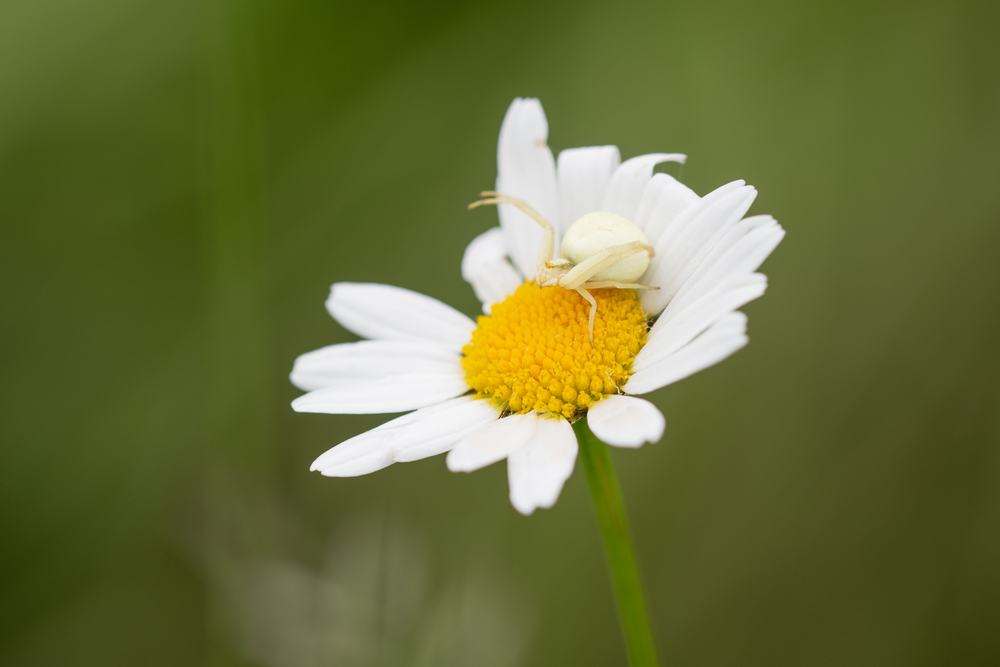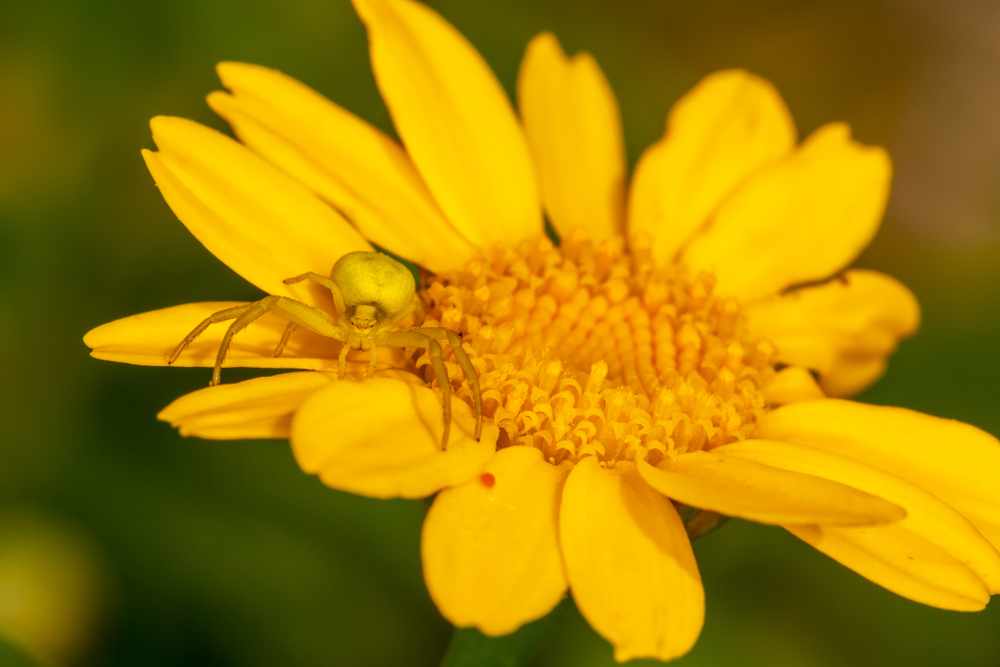The colour-changing flower crab spider hunts among the summer blooms: they fascinate ex-arachnophobe wildlife writer Jane Adams

I’m watching a spider on a flower, in the garden. The bloom of the pink allium resembles a lollipop perched precariously atop a wobbly bare stick. From the four bulbs I planted last autumn, there are now four perfect spheres, each one covered in bumblebees, honeybees and hoverflies. The spider, more precisely a flower crab spider, has set up shop on one of these blooms.
For years, flying insects have fascinated me. Their artful flight and tuneless buzzing are the essence of summer days and warm, soothing sunshine. But I am also fascinated by arachnids.
Not that long ago, I had an irrational fear of them, and would run a mile if ever I saw one. However, over time (and a lot of close-up photography), I have grown to love them.
The only complication is this particular spider also has a love of my favourite flying insects…
Some party trick
Flower crab spiders, or Misumena vatia, are common in gardens throughout the south. The Latin term ‘vatia’ means bent or curved, and as I watch this spider, she sits motionless with her powerful crab-like front legs ready to pounce: I’m mesmerised. Unlike many species of spider, the crab spider doesn’t make a web. Instead, she excels in the art of ambush. If and when she catches something, she will immobilise it by injecting digestive enzymes into its body with her fangs, before eventually sucking out its bodily fluids.
I know, I can hear you now. Ewww! How on earth can you love THAT?
Maybe love is too strong a word, but I definitely admire a transformative trick she keeps up her hairy sleeve. The female flower crab spider has the remarkable ability to perceive and see colour, and she can adapt and change the colour of her own body. This unique skill means she can blend seamlessly with the flowers that attract the highest number of prey. Admittedly, it can take her a while to change her shade – usually between ten and 25 days – but by secreting a liquid pigment into her body’s outer cell layer, she can morph from white to yellow, pale green… or even pink.
Imagine that as a party trick.

Flower crab spider facts:
Size: Female 5-9mm Male 3-4mm (the female will eat the male before or after mating, if he isn’t quick to escape!)
Eats: Flies, bees, butterflies, grasshoppers and moths
Find them: On garden and wild flowers from May to August (but you may need to look hard to discover them!)



